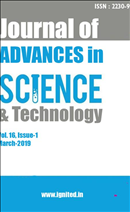Efficiency Strategies for Community Assembly Processes of Soil Ammonia Oxidisers
Understanding and Enhancing Efficiencies in Soil Ammonia Oxidisers
Keywords:
efficiency strategies, community assembly processes, soil ammonia oxidisers, nitrite, nitrate, denitrifiers, bacterial nitrification, archaeal nitrification, ammonia-based fertilisers, N2 O emissions, ammonia-oxidizing archaea, ammonia-oxidizing bacteria, comammox bacteria, N2 O production, ecological niches, low soil pH, ammonium delivery, fertilisation strategies, agricultural soils, community-assembly processesAbstract
Directly, by providing nitrite and, after further oxidation, nitrate to denitrifiers, the bacterial andarchaeal nitrification of ammonia is a substantial source to worldwide NOx emissions. Due to the hugeand continuous increases in the usage of ammonia-based fertilisers, which have been driven by thedemand for higher food production but also serve as a source of energy for ammonia oxidizers,terrestrial settings are the primary contributors to growing N2 O emissions (AO). Many metabolicprocesses in AO, sometimes in conjunction with abiotic mechanisms, lead to the direct synthesis of N2O. Ammonia-oxidizing archaea (AOA), ammonia-oxidizing bacteria (AOB), and comammox bacteria allhave their own unique physiological traits and methods for producing N2 O, which set them apart fromone another. In terms of N2 O production, AOB much outstrips the other two types. Many studies haveshown that AOA and AOB live in discrete ecological niches because of the differences between theirnatural and man-made habitats. For instance, low soil pH and a slow rate of ammonium delivery promoteAOA, which is similar to the use of delayed-release fertiliser, while a rapid rate of supply promotes AOB,which is similar to the use of highly concentrated inorganic ammonium or urea. These differencesbetween AOA and AOB provide a potential avenue for improved fertilisation strategies, which might leadto greater fertiliser use efficiency and reduced N2 O emissions from agricultural soils. In this piece, weexamine how community-assembly processes form the basis of effective treatments for soil ammoniaoxidizers.Downloads
Download data is not yet available.
Published
2019-03-01
Issue
Section
Articles






